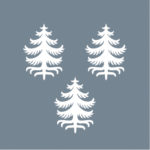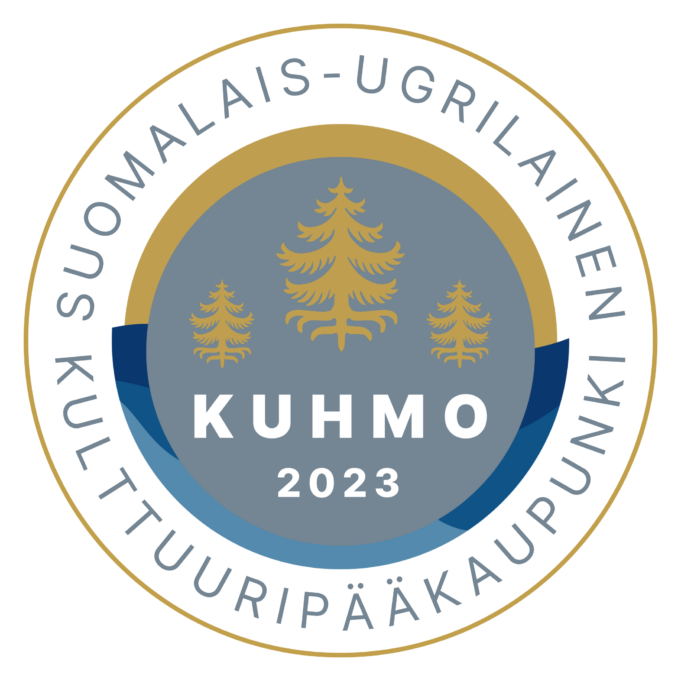Maintenance
The Jämäs barracks
Jämäs barracks were completed 1934-38 and served as the maintenance centre for the Finnish troops. During the Winter War the headquarters of the Kuhmo troops operated there. At first the Finnish troops in Kuhmo were commanded by Lieutenant Colonel Frans Ilomäki and after the end of January 1940 by Colonel Hjalmar Siilasvuo. Jämäs had among other things a kitchen, accommodation, clothes storage, laundry and sauna.
Transportation and traffic
Supply troops used horses. The most common transport during the war was a horse-drawn sleigh. During the refresher training, horses were commandeered from private owners to reinforce the military stock. The use of cars was hindered by the lack of qualified drivers and maintenance personnel. In addition to the normal maintenance, the supply troops had to take care of the transportation of evacuees and domestic animals, and this proved to be a big effort. Since Kuhmo didn’t have a railroad, troops could not be transported to Kuhmo by train. Reinforcements to the Kuhmo front were first transported by train to Nurmes and Sotkamo and brought to Kuhmo mainly by trucks.
Medical services
During the Winter War medical services operated mainly at the regimental aid posts and the military hospitals. The locations of the military hospitals in Kuhmo had to be changed often because of the constant bombings. The medical officer in charge was Captain Ilmari Nurminen (1902-1986).
The district hospital in Kuhmo, which had space for 50 beds, became the military hospital 9.10.1939. The hospital had civilian equipment and became operational 10.10.1939. The operating room of the district hospital was used for surgical operations. There were no x-ray machines and the instruments belonged to the district hospital.
In December 1939 the military hospital was moved to the Ontojoki elementary school in Sotkamo because of the bombings in Kuhmo. The hospital operated in this location until it was damaged in a fire 23.1.1940. The surgical ward was transported to the Tervasalmi house in Katerma 20.12.1939. There was space for 12 beds in the Tervasalmi military hospital.
The new school in Kuhmoniemi was open only for a few months before the war started. The Main First-Aid Station 2 (PSP 2) of the 9th Division operated there during the war. There were 50 beds and some temporary beds in the building. Surgical operations were performed in the school kitchen. Ilmari Nurminen was the military doctor, and medical staff came from the district hospital. First patients were received 29.1.1940. About 60-150 patients came in every day from the 8-10 regimental aid posts.
The wounded were picked up during the night because the danger of air raids. The hospital building was disguised to look uninhabited and heating during daytime was banned because the smoke might bring in Soviet bombers. The ambulances didn’t drive up to the school. The wounded were pulled to the school in sledges. This was done using a small path that led from the road to the school and was covered by trees. The Main First-Aid Station 2 operated at the school of Kuhmoniemi all through the war.
The elementary school in Jämäs operated as a field hospital. The school was not yet finished in 1939. There were two classrooms ready, and there was room for 40 patients. If necessary, it was possible to squeeze in 70 patients if all the floor space was used. The Finnish and Soviet patients often slept in bunk beds.
The elementary school in Jämäs also had a pharmacy, which was operated by Reserve Second Lieutenant, pharmacist Veikko Inkala. Chief medical officers were: Reserve Medical Captains Eino Elovainio, Niilo Apajalahti, Eino Sipilä and Paavo Sallinen. The most important room was the surgical ward operating in the kitchen. In addition to the surgical operations, some blood transfusions were also performed there. Work was done mostly at night because of the risk of Soviet bombers. Patients were moved further away to military hospitals as soon as possible. There was a dugout in the nearby forest to offer some protection in case of a Soviet bombing. After the Winter War the field hospital was divided into the 9th and 11th field hospitals.
Ordnance
The main ordnance logistics unit was the Ammunition Supply Company. The company had separate platoons for infantry and artillery ammunition, a gas precautions equipment platoon and a delivery platoon.
To make it easier to estimate the need for ammunition, supplies, storage and transportation, a unit of measurement (a “fire-unit”) was used. Fire-unit for the most important weapons was: 60 shots for a rifle, 350 for a sub-machine gun, 1 200 for a light machine gun and 2 000 for a machine gun.
Supply
During the war supply troops took care of provisioning, clothing and local acquisitions. During the war provisioning was based on war ration 2 (established 17.10.1939). There was also the patrol ration, which was used for patrol- and guerrilla activities.
The situation with clothing and equipment was not good at the beginning of the war. Only the covering forces had adequate clothing. The supply, reserve and home troops lacked for the most part military clothing, tents and field kitchens.
Lack of tents was compensated by the 180-kilogram cardboard tents manufactured by Enso-Gutzeit. They were hard to move and put up (nails had to be used), so only staffs and troops further away from the front could use these tents.
During the Winter War the Lotta Svärd organisation founded a workshop in Sotkamo. About 20 lottas worked there making for example 658 snowsuits for the Finnish troops.
Supply troops also took care of the cash services for the troops. The daily allowance was 5 marks for the men, 10-15 marks for the petty officers and 20-50 marks for the officers (6 marks = 1 euro).
Field post
Field post was responsible for the delivery of mail between the troops and the civilian population during the war. All the different units and organisations were given a code number, which stayed the same regardless of where the unit was sent.
Since 20.10.1939 the field post office in Kuhmo operated in Korpisalmi 10, Tuupala. The field post arrived with the civilian post and was delivered to a military courier. Postmistress Lahja Kainulainen moved to Sotkamo and the field post moved to the Jämäs barracks and was managed by the substitute office managers. Field post office returned to Tuupala 15.4.1940. Since the middle of May the rural post services started with female workers. The field post was closed 1.12.1940.
Telephone operations
The telephone exchange moved in the early winter 1939 from the Kuhmo village to the Jämäs barracks and the telephone network was expanded. The exchange had 51 lines and was operated by frontier guard men O. Kanerva and V. Männistö with the help of lottas. The exchange had communications with all the headquarters. There were also telegraph connections from Jämäs.
Accommodation
Finnish soldiers followed the so-called scorched earth policy: They burned all buildings that could offer protection for the Soviet forces. There were several men that had to burn down the home that they had built with their own hands.
The quartering for Finnish soldiers was arranged in houses and tents.
Soviet troops didn’t have tents or heaters. Soviet soldiers made stoves out of ammunition boxes and barrels. Their morale fell when they to stay out at night time in the freezing cold. Soviet troops built quarters in their dugout shelters.


